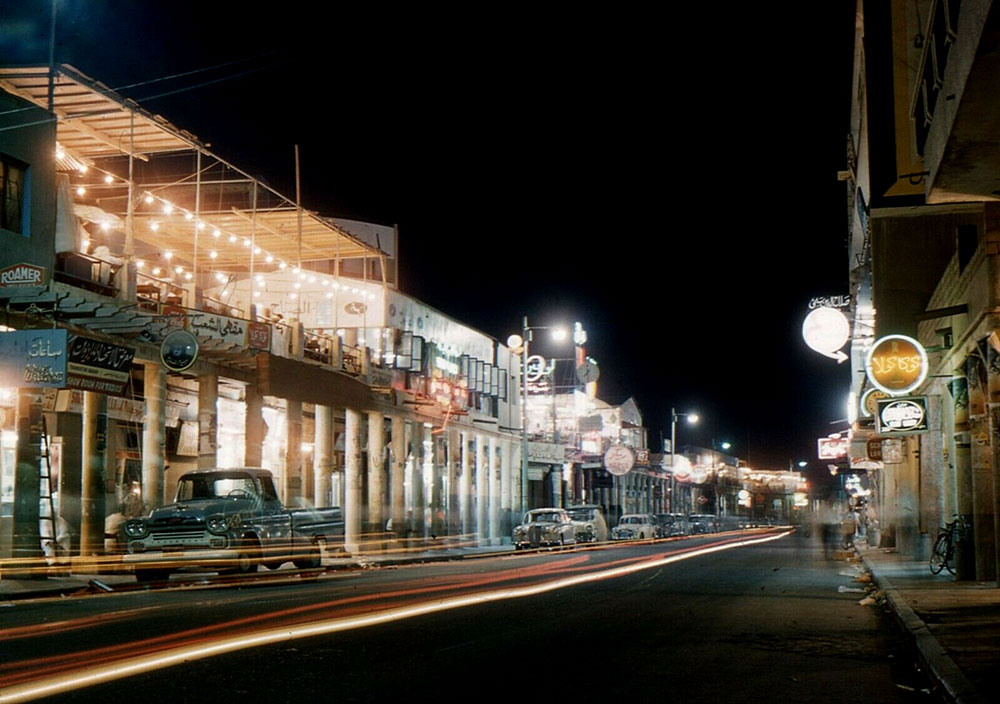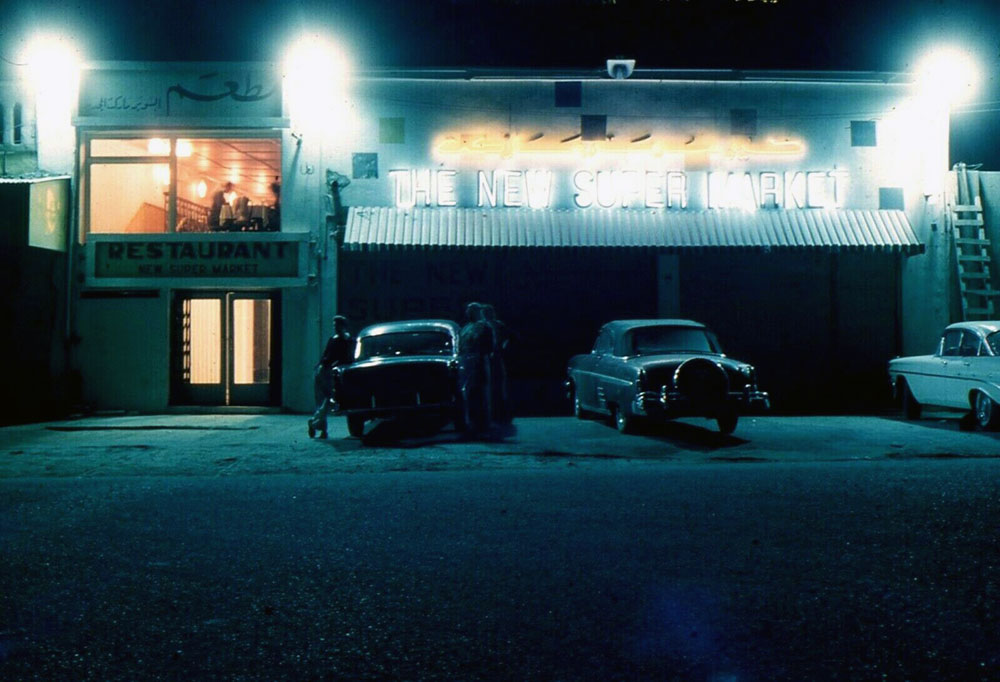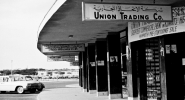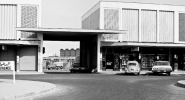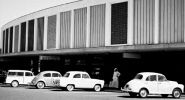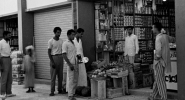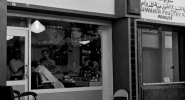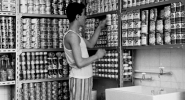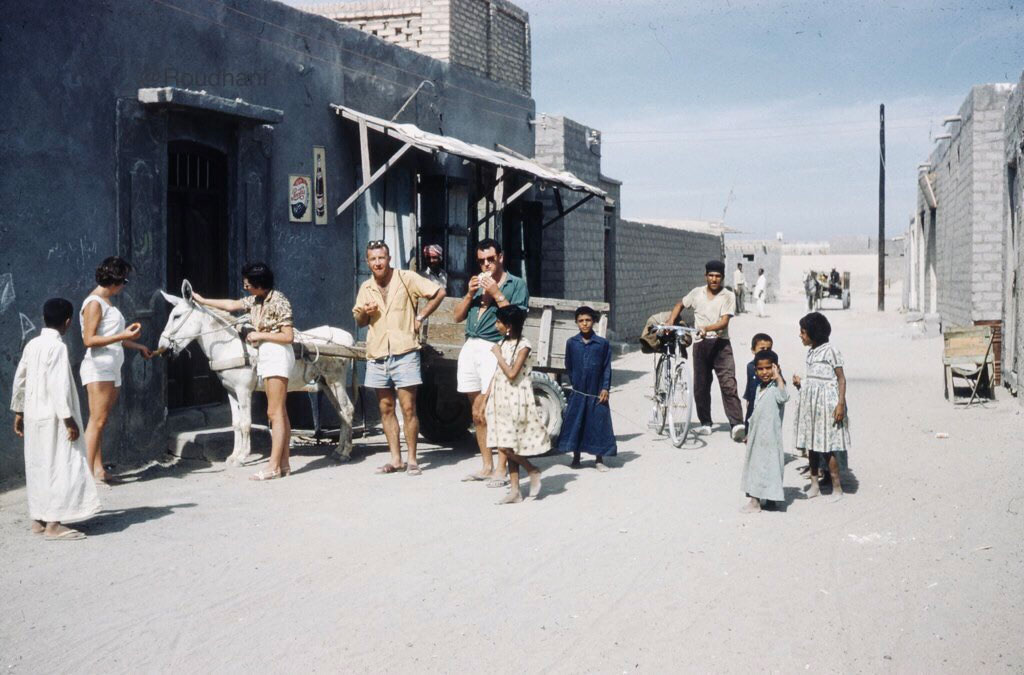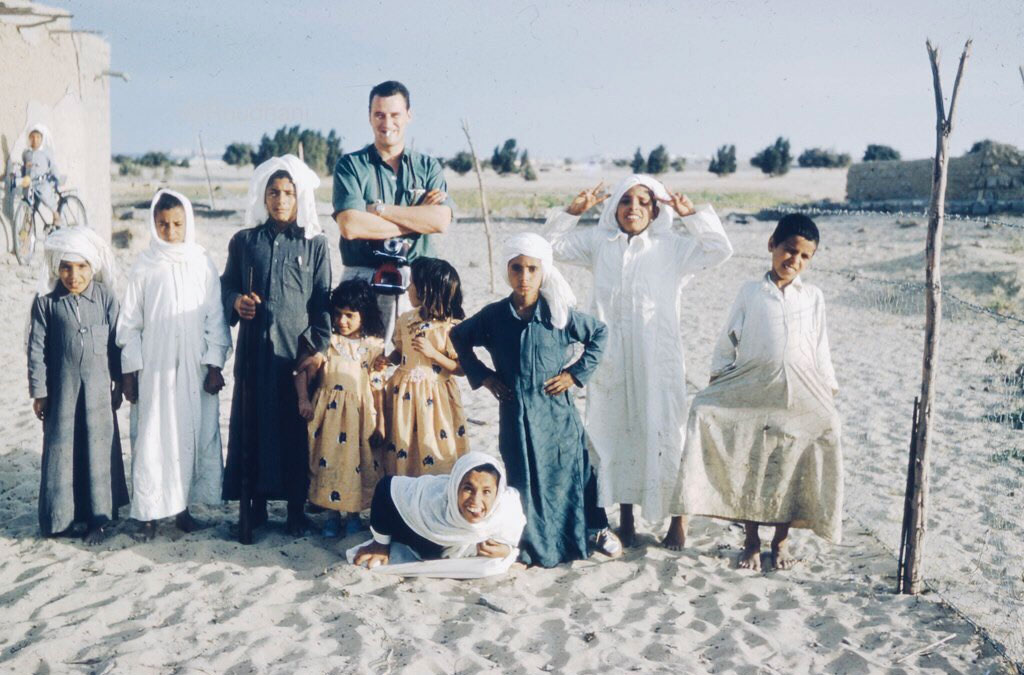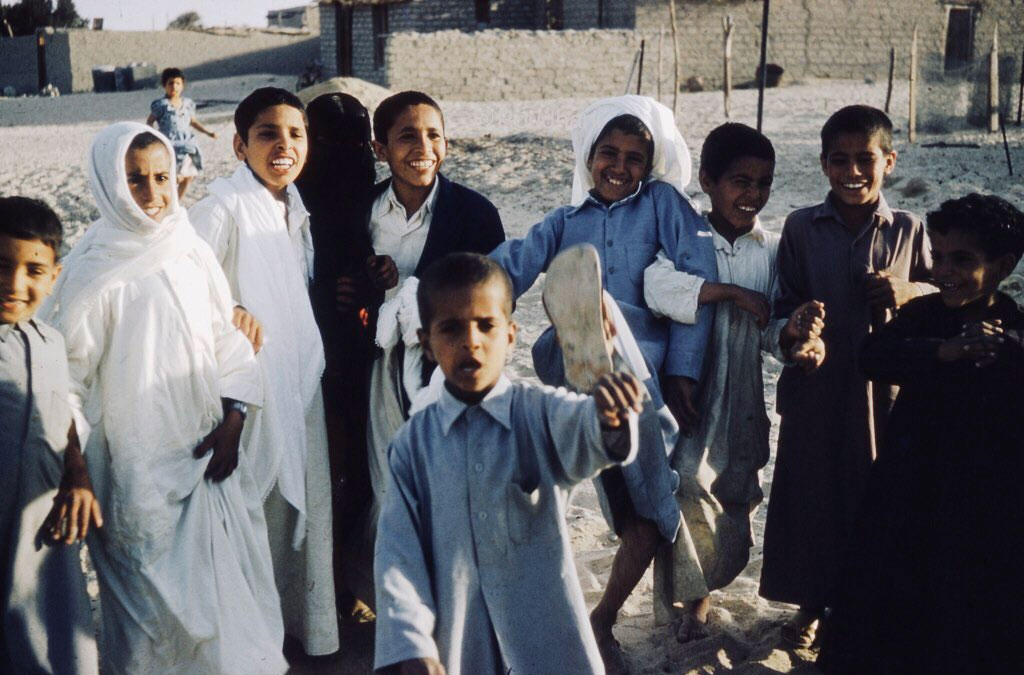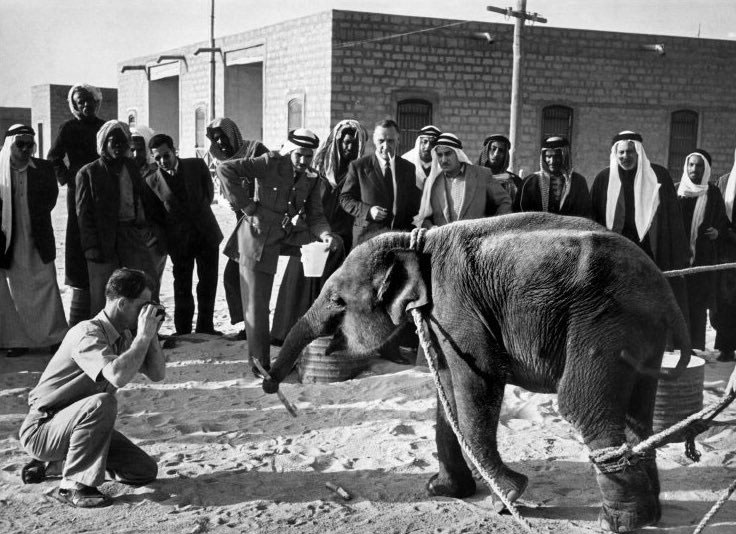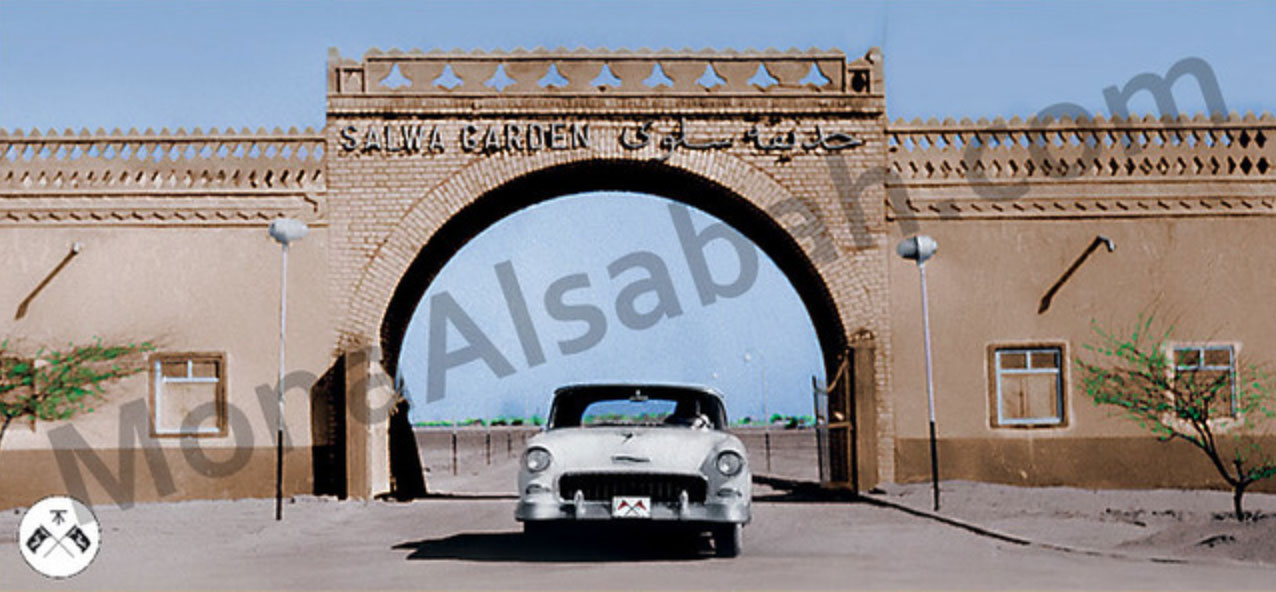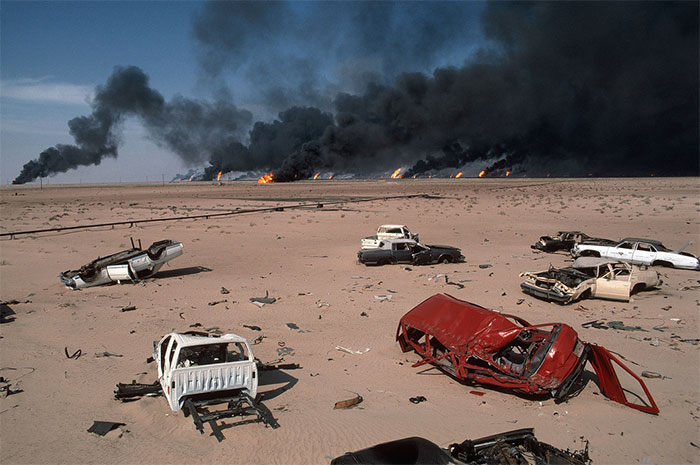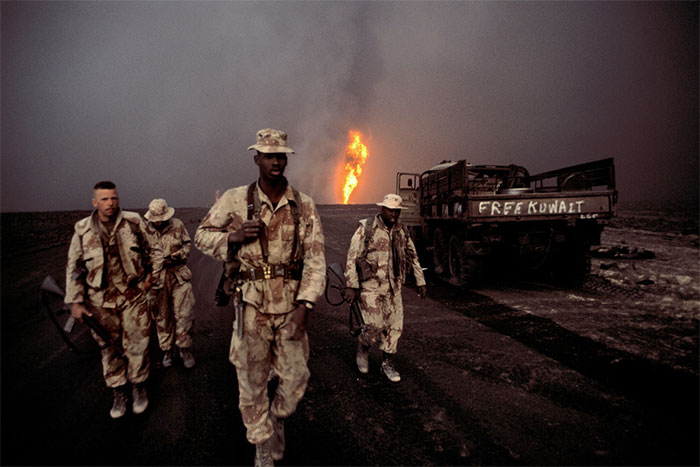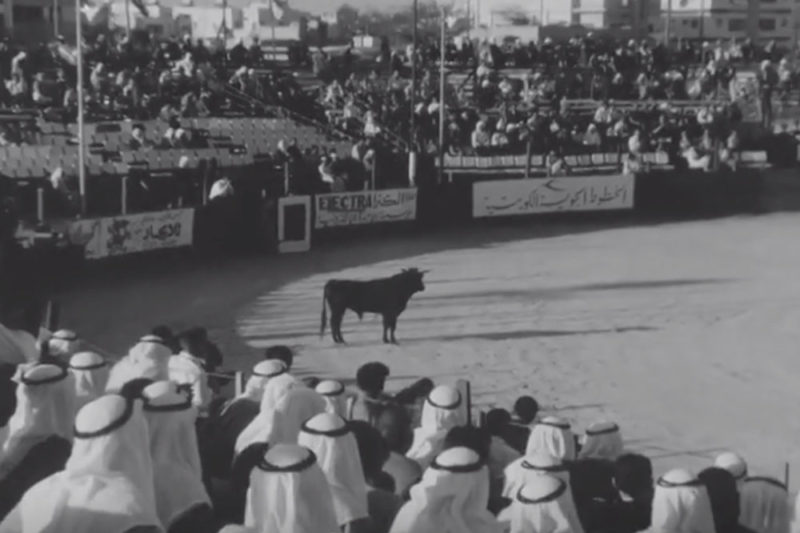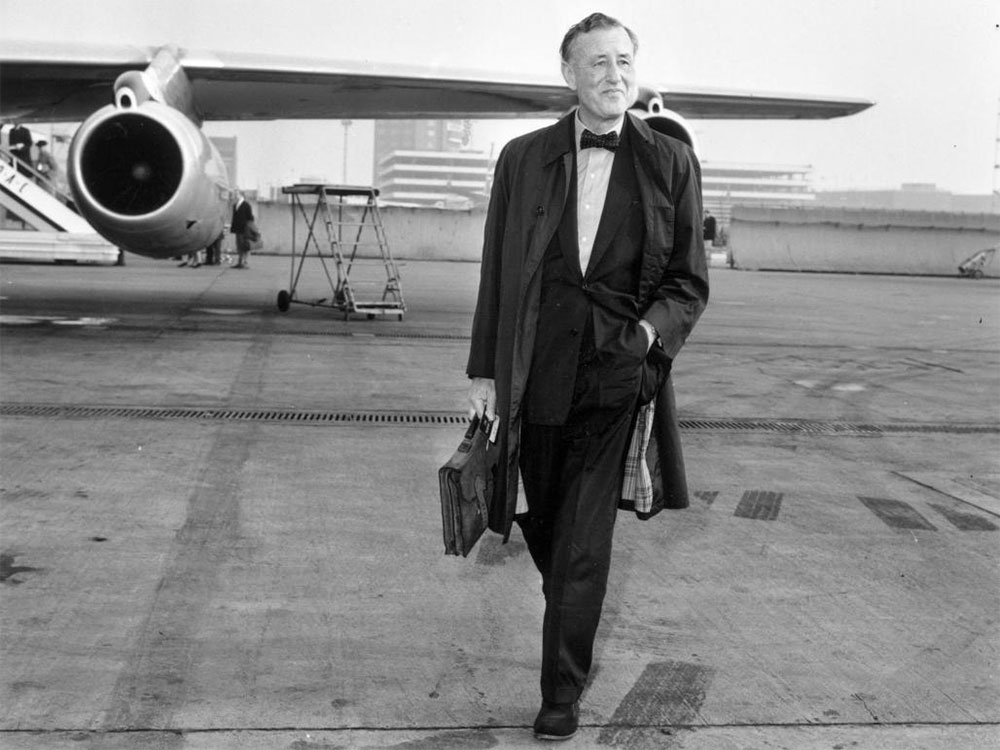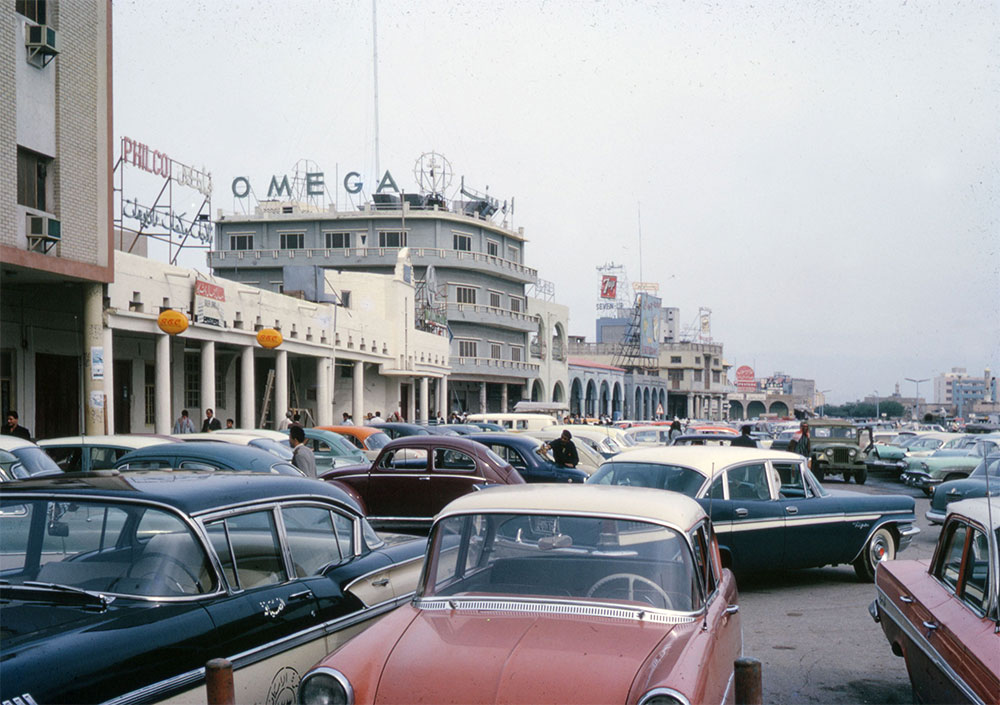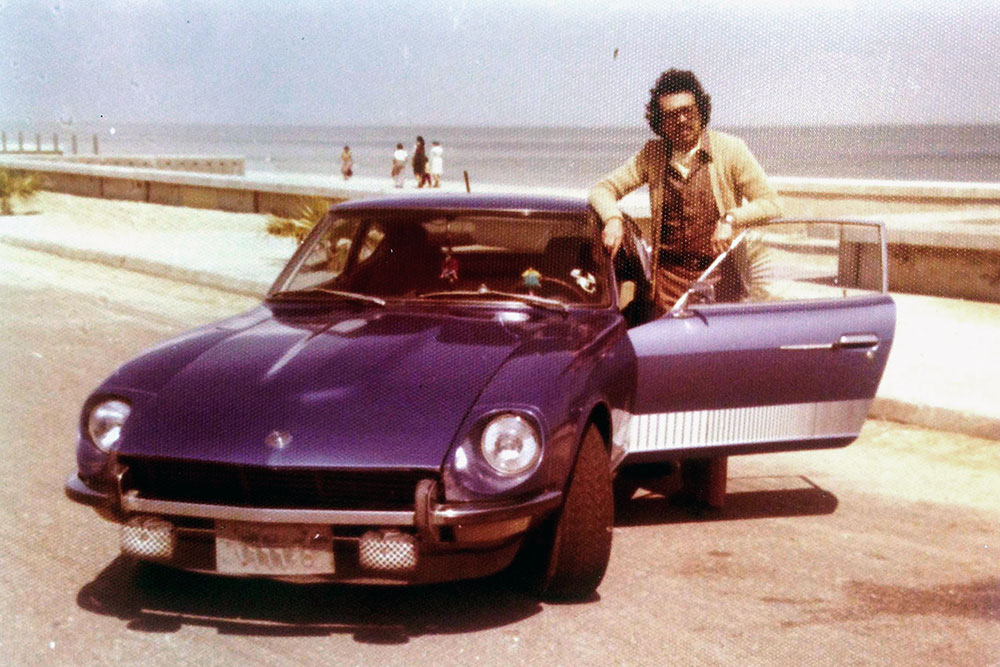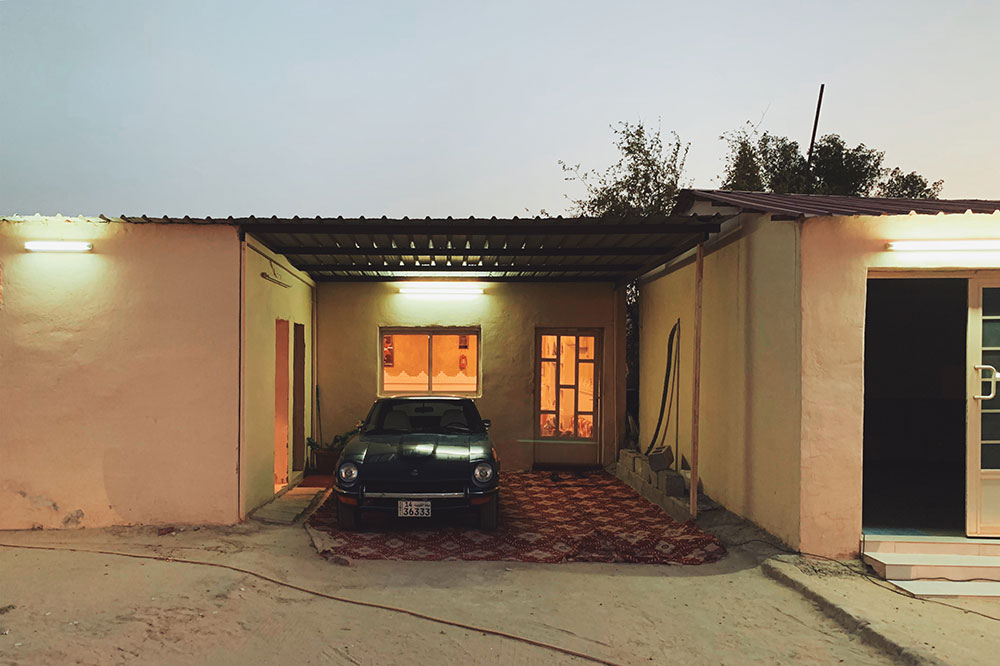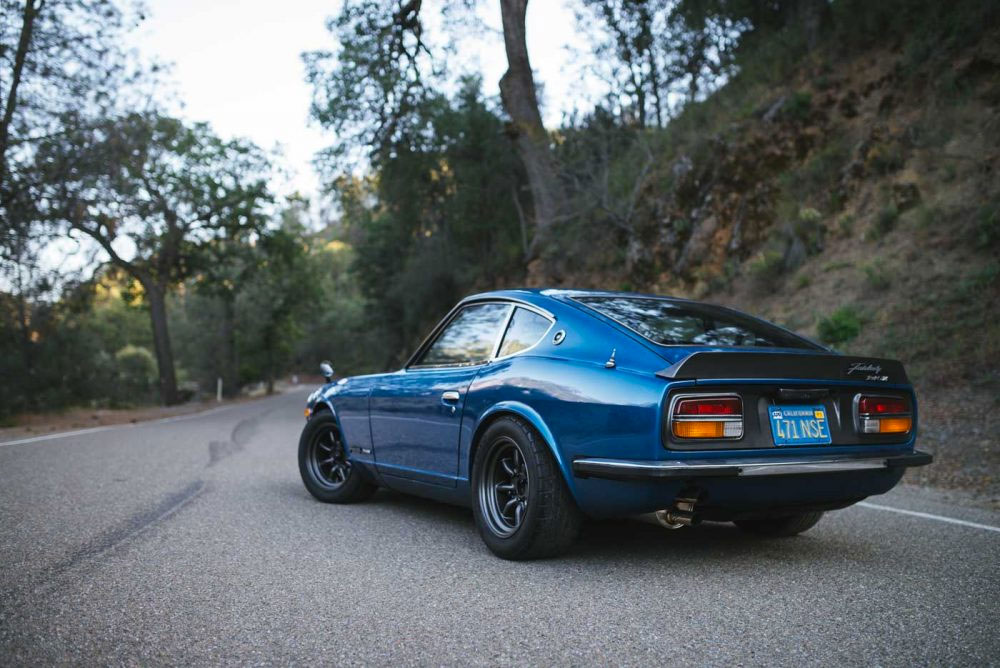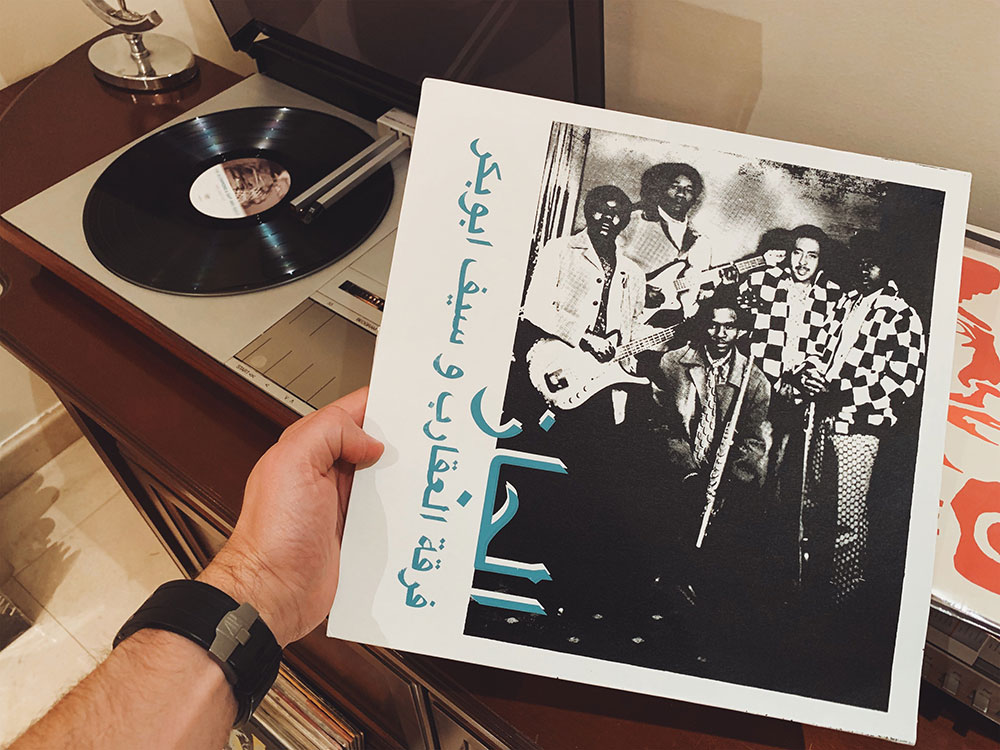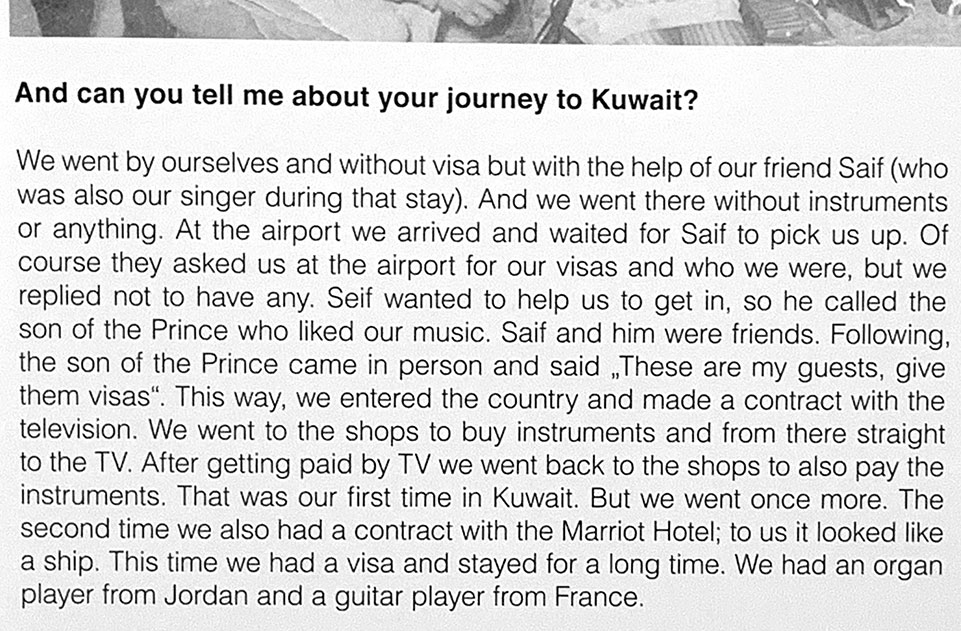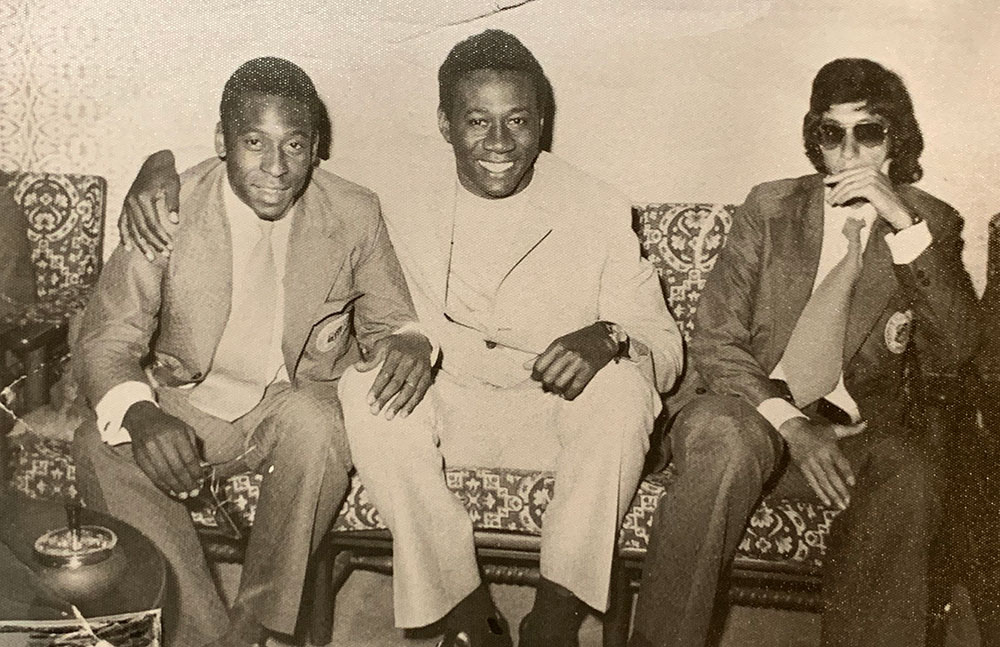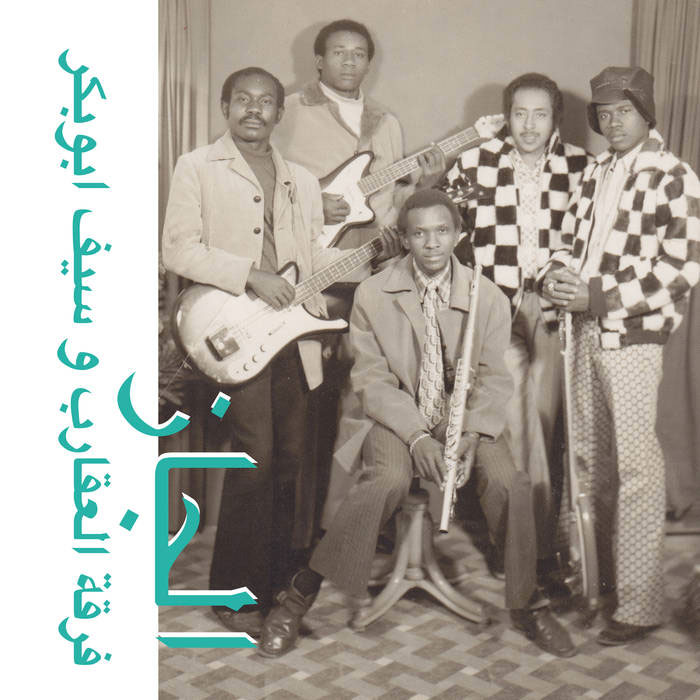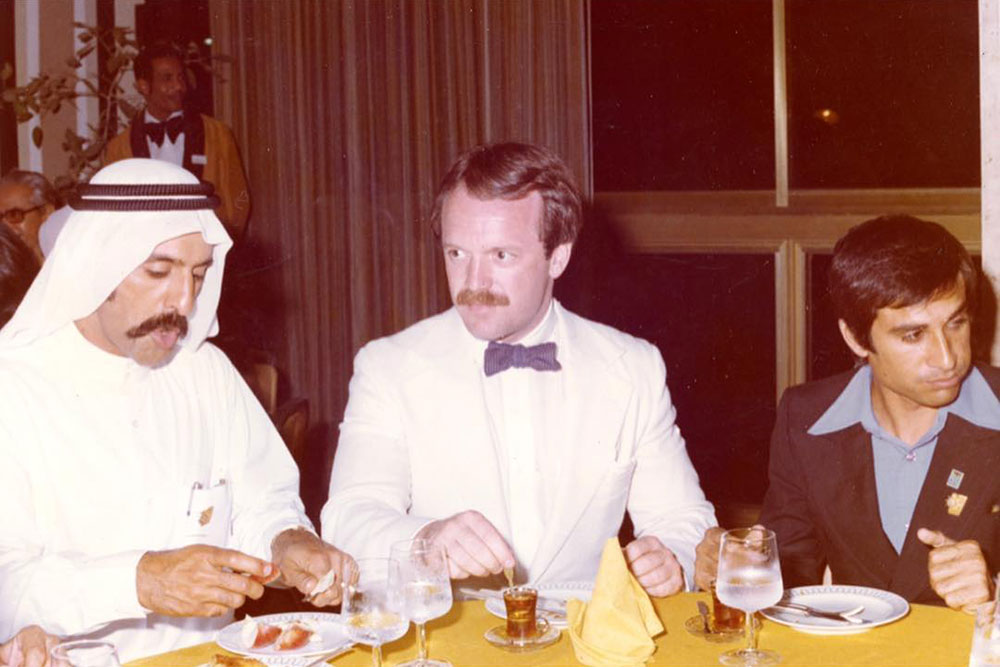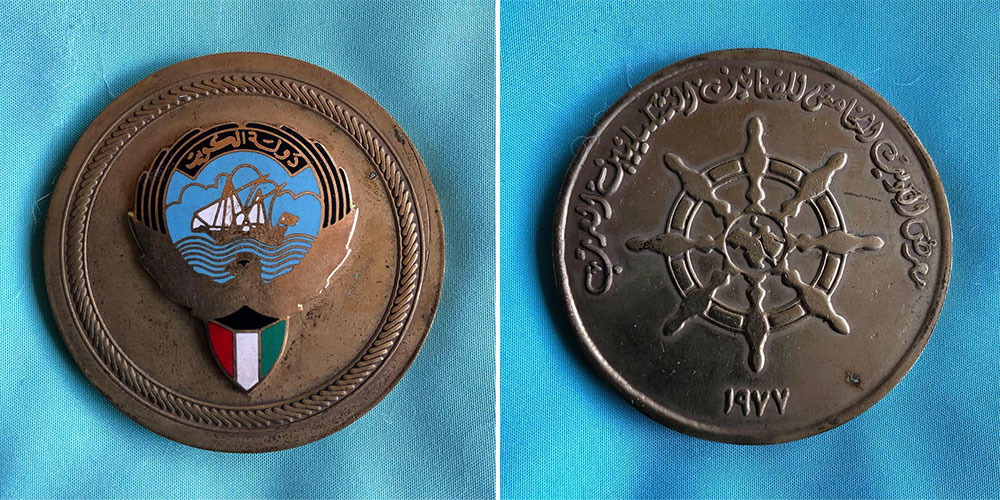
I found some scans on The Sultan Gallery’s instagram account taken from The Andy Warhol Diaries with not-so-flattering comments from his visit to Kuwait which I thought would be interesting to share.
Andy Warhol came to Kuwait in 1977, invited by the National Council of Arts, Culture, and Letters, and an exhibition of his work was held at the Dhaiat Abdullah Al Salem Gallery on January 18, 1977. Fred Hughes, his manager, accompanied him from the States, along with James Mayor of the Mayor Gallery in London. [Source]
I managed to get his entries typed out to make it easier to read and you can check them below:
Saturday, January 15, 1977 — London — Kuwait
Up at 7:00 for the flight to Kuwait. Tired. Packed, showered. Looked for crabs, still. Sent the hotel bill to the Mayor Gallery (tips at hotel $10). Picked up James Mayor at his place. He’d gotten us second-class seats, I was really mad. but there was one first-class one and I got it. Kuwait Air. The plane had to stop at Frankfurt and lots of people got on there. Read The Users by Joyce Haber, very boring, about a homosexual husband. Joyce was married to Doug Cramer, he’s a producer. There was a sheik on the plane up front with bodyguards in an even further front cabin. Took a pill. Fell asleep.
Woke up when the plane was landing. Arrived 11:00 late at night. Met at the airport by some Arabs. There was a girl Nadja, from the Council for Culture, who’d arranged the show. They made us drink some strange coffee at the airport.
Sunday, January 16, 1977 — Kuwait
Up at 9:30. Breakfast toast and tea (tip $2. laundry $1). James called. meeting downstairs at 12:00. We were taken to a place that looked like some dump, but then everything here does, and it wasn’t until days later that we realized it had been a chic place. Outside the sun was warm with a lot of cars going by—big Rolls Royce, big American cars. They gave us two cars but we only used one. Went back to the hotel to try to buy A-200 to kill the crabs.
Bought Nick Carter Mysteries ($4). At 4:00 had to meet Nadja and James again. Went to souk for local color. Ladies in black hiding their faces, big marketplace, bazaar. It got very cold. Got an outfit to give to Victor as a gift (hat $4, dress $26). Spent time looking for antiques, but there are none in Kuwait—just a few old pots from a couple of years ago. We were the only foreigners in the marketplace.
Went to Nadja’s gallery. Had some more of the sweet funny coffee they offer you all the time, you go crazy. We didn’t know that if you don’t shake your cup they keep pouring it in.
Bought five more copies of the Kuwait Times ($1). Calligraphy beautiful, no Pop there. Went to different drugstores looking for A-200. To hotel. Ordered dinner before dinner (tip $2). The people we were having dinner with sent a silver Cadillac limousine. Arrived at Qutayba al Ghanim’s, a rich young Peter Brant type. His house was on the gulf, a little out of town. Land there was really expensive. He made it chic by moving there.
Kuwaitis don’t serve hard liquor or beer or anything, it’s against the law, but the rich ones have some hard liquor. Jack Daniel’s or something.
Read Nick Carter. Really good—sex and girls.

Monday, January 17, 1977—Kuwait
Visit to the National Museum, there’s no history to this place, it goes back twenty-five years. There were like eight rooms, one had three coins in the whole room. Think there was one room that Alexander left some pots in. Alexander the Great—three pots and four coins. A room with yesterday’s dresses. More tea and coffee with the director. Just sat there, there was nothing to do. Carred over to see the secretary-general of the Council for Arts for more tea and coffee and ceremony. Dirty handprints on the wall, as if they killed somebody and it was a work of art or something. Guys standing around.
Everybody says the same routine: Where are you staying? How long have you been here? How long will you be here? When are you leaving? When are you coming back?
Carred over to see a rich collector named Fahad al Dabbous. Chubby and cute. He had a lot of paintings around on the wall, some Dalis, one sort of big one, lots of male friends there, most in costume, a couple of wives. They had drinks there, also—only the rich, remember? A big spread on table, nothing compared to Iran’s big spreads. The men looked fat, but usually in costume you couldn’t tell too much. But this one was chubby. He had bought the Marilyn and the Flower prints. He was wearing a girl’s diamond-studded watch with a blue face. The Kuwaiti food was greasy—greasy roast.
Bought crab soap ($6). At 8:00 we were picked up by Mr. Bater, who was the cultural attache from the United States to Kuwait, and taken to see the American Ambassador Morandi who was giving us a dinner. His wife was from Seattle, talked so much it drove us crazy. They were Democrats. Dinner was served at 10:00. Left at 12:00, bored. Used the crab soap, it didn’t work. Fell asleep in the bathtub. In bed couldn’t sleep. Read the Ruth Kligman book again, she was driving Jackson Pollock crazy in the car and that’s when he ran into the pole. Gave it to Fred to read.
Tuesday, January 18, 1977—Kuwait
Up after restless night at 9:00 (tio $1, laundry $2). James Mayor urgently calling—we were always late because it was always so boring we weren’t in a hurry. Visited a Kuwaiti artist atelier. Three artists in each room. This time tea or orange pop. Visited each stall, had to. One guy painted in Picasso-Chagall style. Not one original style. They sit on the floor and paint on rugs and pillows, it looked like hippie streetwares, like the sixties. It was the only nicely designed building in Kuwait because it was a copy of the Ford Foundation. Got a tour of the building. The man said it was very Kuwaitian.
Picked up at 4:30 for the opening of the exhibition in the Arts Council Hall. We had to meet the minister of state there. I think his name was Ahmad Al-Adwani—have that name written down. But maybe that name goes with someone else. I had sent him a copy of the Philosophy book [see Introduction] and he said he’d read it and that it had clever ideas, he was old and cute. There was a red ribbon in front of the door. I had to carry a pair of gold scissors on a red pillow to cut the ribbon. A lot of TV and press there.
Wednesday, January 19, 1977—Kuwait
Went to the exhibition for a tea party and had to drink more tea and then we were invited by the English ambassador to drop by. His daughter was there, she was seventeen and drew cartoons about fags. She was cute and funny. Had her father’s chin, which was no chin. There were a lot of English people there who’d been living and working in Kuwait for years. Left. Big rainstorm.
Picked up by Nadja and had a fight with Fred about not going to Germany. He said I had to go because “you’re a fading star there.” It was the way he said it that got me mad.
Dinner at Nadja’s house. ‘There were sixty people. The best party the whole trip. She had eight or ten brothers and a mother and sisters and all the men dance together, looks like the twist. The food was really good. Then men began dancing with Fred. Someone gave him $40 for dancing so well. Had to stay until everybody left-2:30. James admired somebody’s robe and they gave it to him. Jed admired someone’s nose ring and he got it. I didn’t know about the custom, so I didn’t get anything.
If you’re interested you can check out his full programme from his visit on Bidoun.org.









